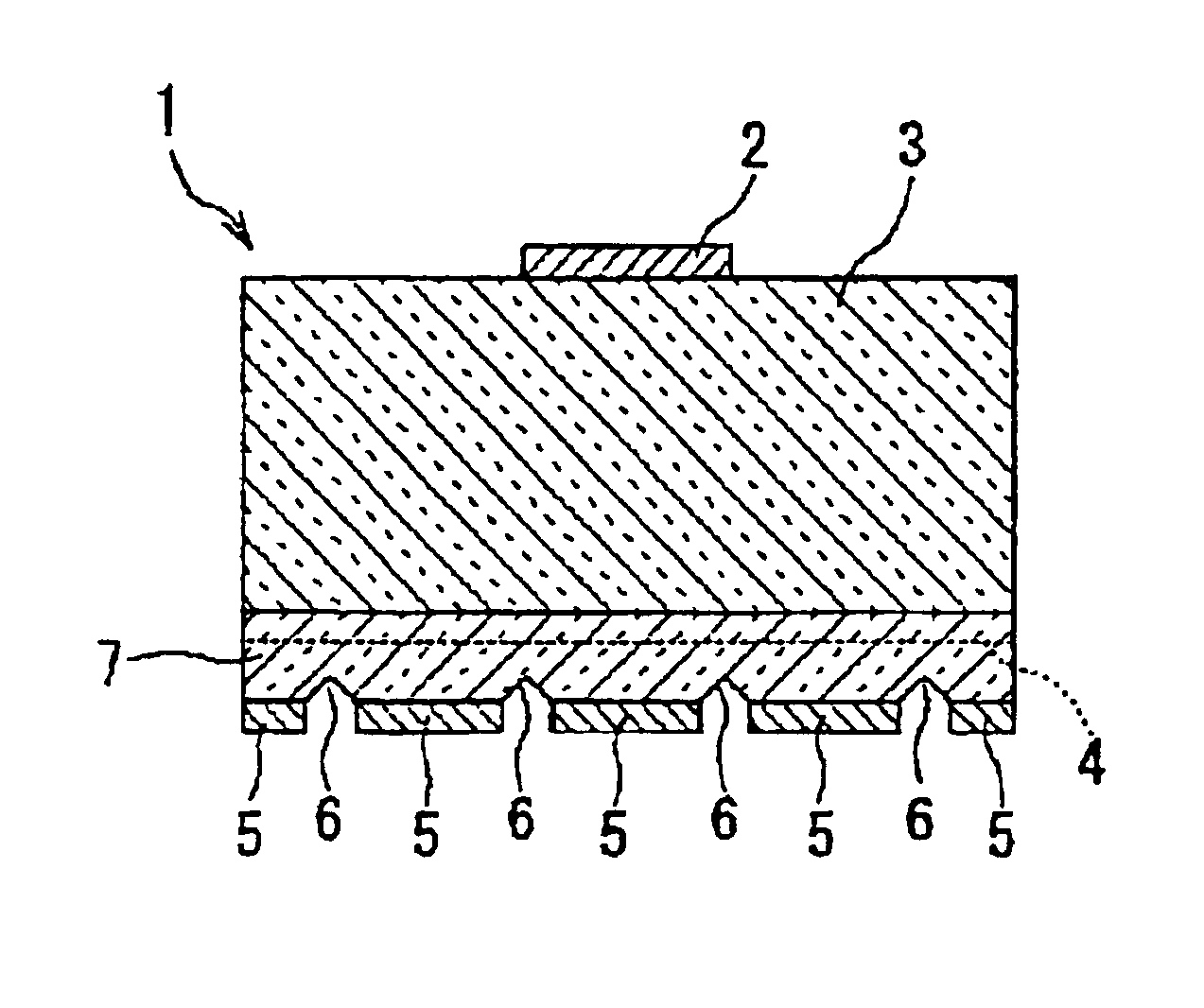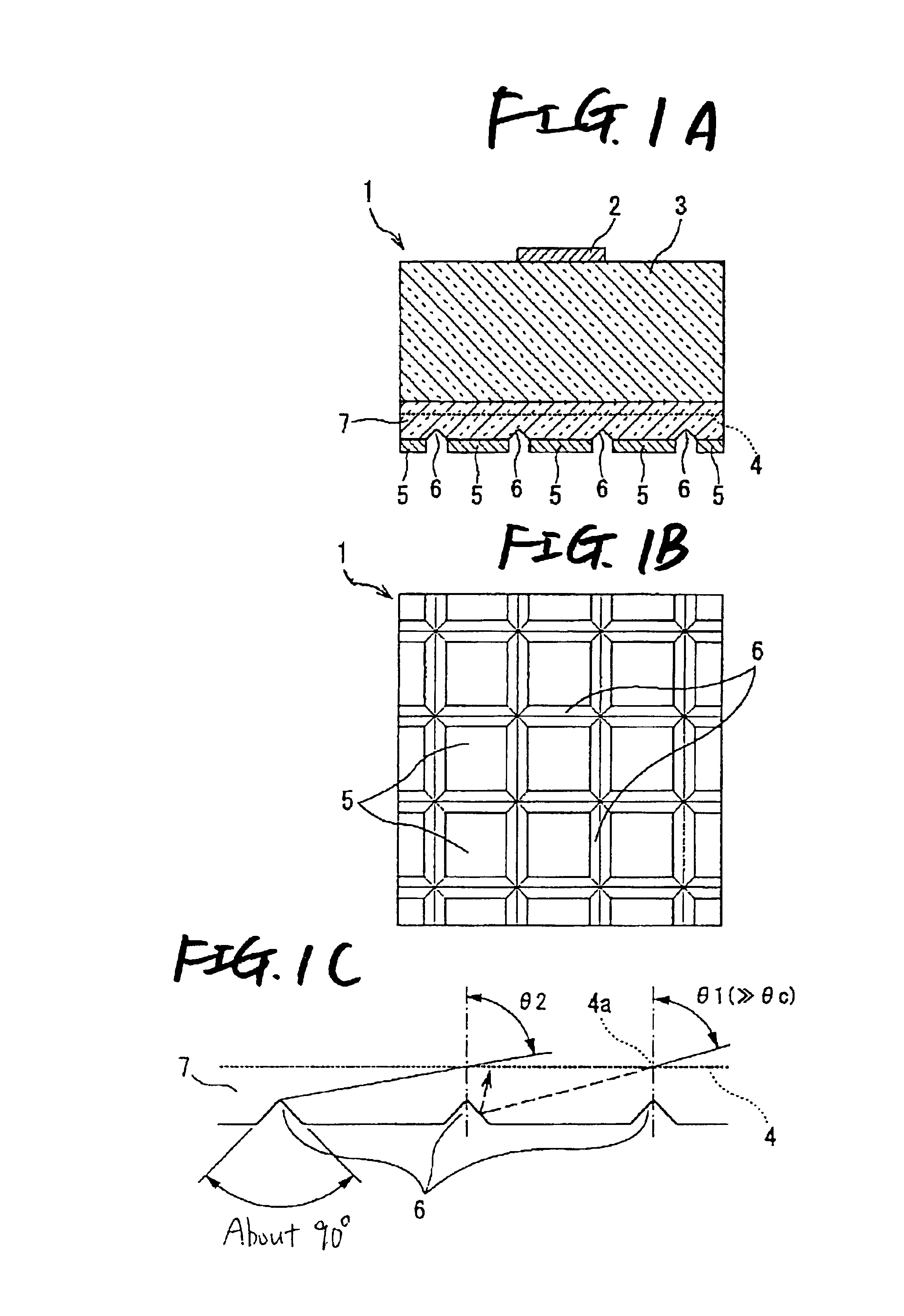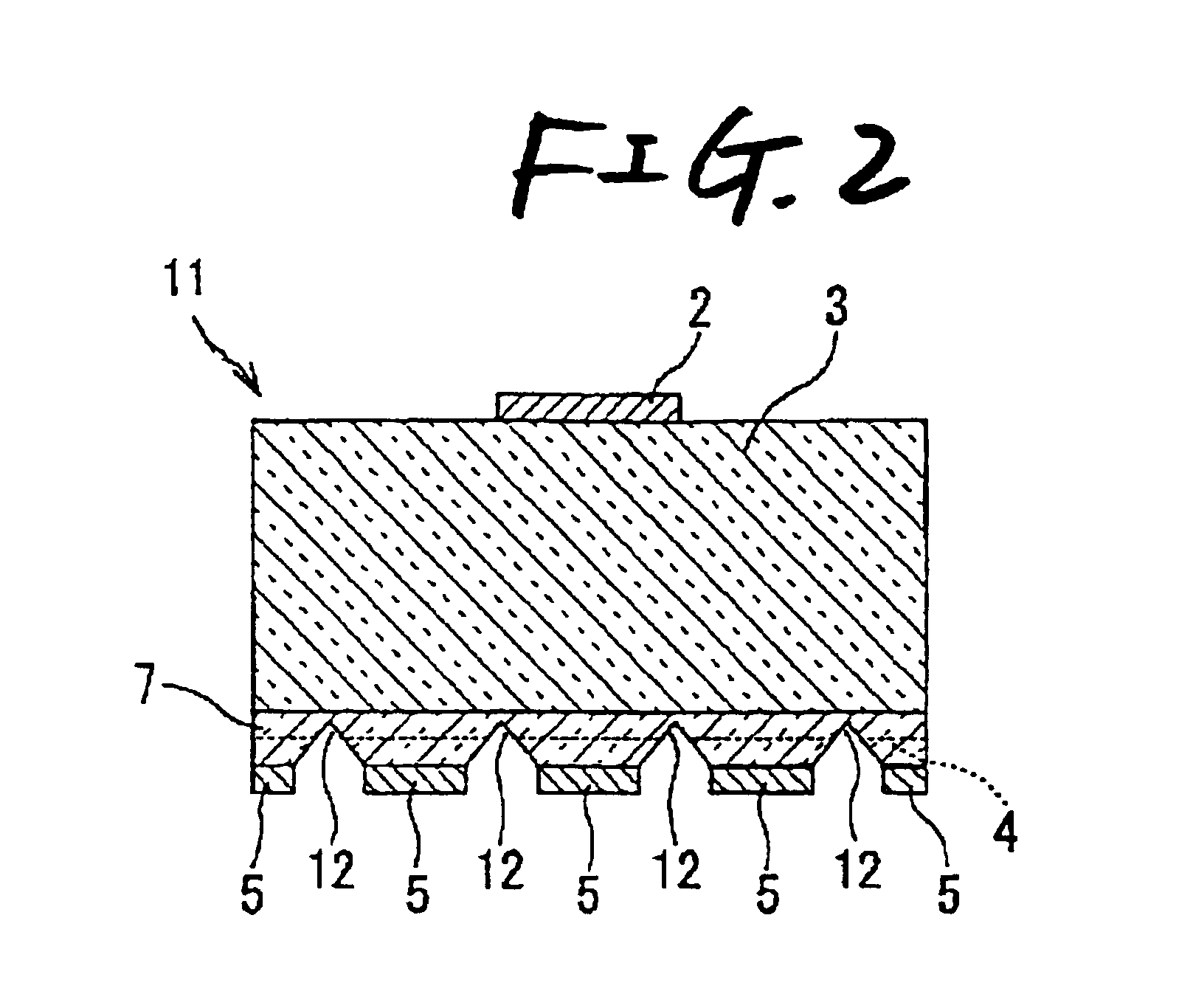Light-emitting element
a technology of light-emitting elements and light-emitting elements, which is applied in the direction of discharge tubes/lamp details, discharge tubes/lamp details, incadescent envelopes/vessels, etc., can solve the problems of low efficiency of extracting light from light-emitting elements, low refractive index of light-emitting layers, and small critical angle, so as to enhance the efficiency of extracting light, increase quantum efficiency, and enhance the effect of extracting ligh
- Summary
- Abstract
- Description
- Claims
- Application Information
AI Technical Summary
Benefits of technology
Problems solved by technology
Method used
Image
Examples
embodiment 1
[0115]First, description will be made on Embodiment 1 of the invention with reference to FIGS. 1A to 1C. FIG. 1A is a longitudinal sectional view showing the configuration of a light-emitting element according to Embodiment 1 of the invention; FIG. 1B is a bottom view thereof; and FIG. 1C is a diagram for explaining the positional relationship between reflecting grooves and a light-emitting layer.
[0116]As shown in FIG. 1A, in a light-emitting element 1 according to Embodiment 1, a GaAs-based crystal layer 7 is epitaxially grown on a GaAs substrate 3 (refractive index n=3.0) so that a light-emitting layer 4 is formed. Then, the substrate 3 side is set as the top surface, and the crystal layer 7 side is set as the bottom surface. An electrode 2 with one polarity is provided on a central portion of the substrate 3 while an electrode 5 with the other polarity is provided all over the bottom surface of the crystal layer 7. After that, wedge-like reflecting grooves 6 are formed at regular...
embodiment 2
[0119]Next, description will be made on Embodiment 2 of the invention with reference to FIG. 2. FIG. 2 is a longitudinal sectional view showing the configuration of a light-emitting element according to Embodiment 2 of the invention. Incidentally, parts the same as those in Embodiment 1 are referenced correspondingly, and the description of these parts will be omitted.
[0120]As shown in FIG. 2, a light-emitting element 11 according to Embodiment 2 is different from the light-emitting element 1 according to Embodiment 1 in that reflecting grooves 12 are formed to go through the light-emitting layer 4 so as to reach a height above the light-emitting layer 4. As a result, not only light radiated horizontally from each light-emitting point in the light-emitting layer 4 but also light radiated somewhat obliquely upward can be reflected upward by the reflecting grooves 12 formed to go through the light-emitting layer 4. Thus, almost the whole part of the light radiated laterally with a lar...
embodiment 3
[0122]Next, description will be made on Embodiment 3 of the invention with reference to FIGS. 3A and 3B. FIG. 3A is a longitudinally sectional view showing the configuration of a light-emitting element according to Embodiment 3 of the invention, and FIG. 3B is a bottom view thereof. Incidentally, parts the same as those in Embodiments 1 and 2 are referenced correspondingly, and the description of these parts will be omitted.
[0123]As shown in FIGS. 3A and 3B, a light-emitting element 21 according to Embodiment 3 is different from the light-emitting elements 1 and 11 according to Embodiments 1 and 2 in that the light-emitting area of a light-emitting layer 14 is formed as split light-emitting areas formed in places except the places where the reflecting grooves 12 are formed. Then, the reflecting grooves 12 are formed to go through the portions where the light-emitting layer 14 is not formed in the crystal layer 13, so as to reach the height above the light-emitting layer 14. As a res...
PUM
 Login to View More
Login to View More Abstract
Description
Claims
Application Information
 Login to View More
Login to View More - R&D
- Intellectual Property
- Life Sciences
- Materials
- Tech Scout
- Unparalleled Data Quality
- Higher Quality Content
- 60% Fewer Hallucinations
Browse by: Latest US Patents, China's latest patents, Technical Efficacy Thesaurus, Application Domain, Technology Topic, Popular Technical Reports.
© 2025 PatSnap. All rights reserved.Legal|Privacy policy|Modern Slavery Act Transparency Statement|Sitemap|About US| Contact US: help@patsnap.com



